Hang In There: Let’s Talk About How Do Gutter Hangers Work
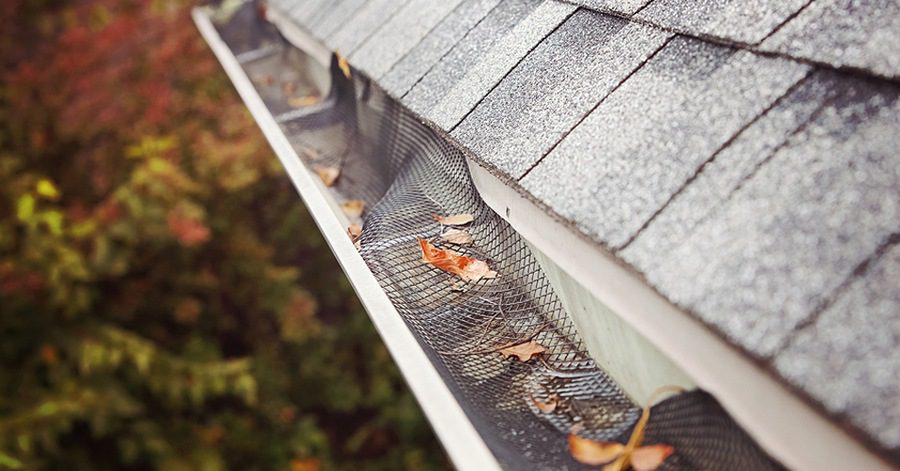
Your gutters are the unsung heroes of your home; yet, they often get overlooked. Although most homeowners have a general idea of how their gutters work, many don’t know about the different parts of gutters or how gutter hangers work. To provide clarity and insight, the team at Ned Stevens Gutter Cleaning of Long Island has created an easy-to-read post about “How do gutter hangers work.”
Read on to learn more and don't hesitate to reach out to the team at Ned Stevens Gutter Cleaning of Long Island for specialized gutter cleaning and maintenance services. Let’s get down in the gutter to see how gutter hangers work.
How Do Gutter Hangers Work?
Before we go over the different kinds of available gutters, let’s do a quick refresher on how gutters and gutter hangers work. Gutters are installed along the eaves of your roof to collect falling rainwater, snow, and small debris that fall off your roof. Then, the water and debris are drained from the gutters via gravity by being pulled to the downspouts and drained away from the home.
However, your gutters aren't secured to your roof with magic. Instead, your gutters are secured to the roof with gutter hangers. As the name suggests, the gutter hanger makes sure your gutter system is well-supported, stable, and secure.
Failure to have a properly functioning gutter hanger system can leave your gutters and home susceptible to water damage. Now that we have covered how gutters and gutter hangers work, let's take a closer look at the most common types of gutter hangers.
Standard Hangers Secured Via Fascia Boards
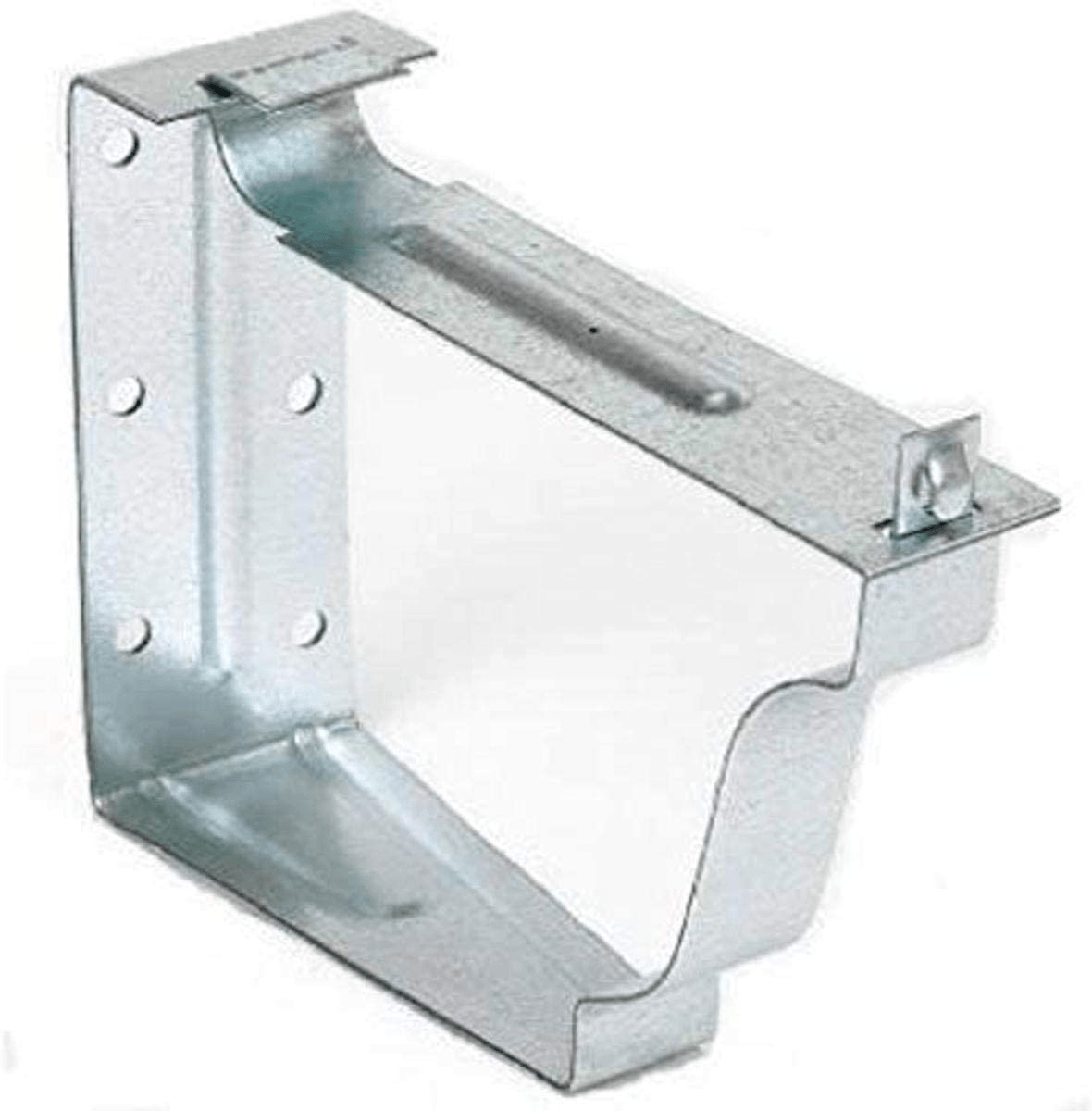
These widely used gutter hangers are installed along the edges of the roof and are supported by the fascia boards. The fascia board is the long, wooden board that runs below the lower edge of a roof. Compatible with both K-style as well as half-round gutters, these gutter hangers are inexpensive and easy to install.
Hidden Gutter Hangers
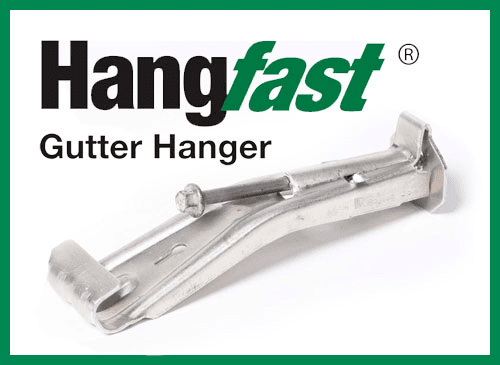
These gutter hangers are similar to standard hangers, but the installation is slightly different. Hidden hangars are screwed to the fascia boards through the inside of the gutter rather than the outside, rendering them invisible from the ground. The sturdiness of hidden hangers makes them ideal for areas with heavy rainfall.
T-Strap Gutter Hangers
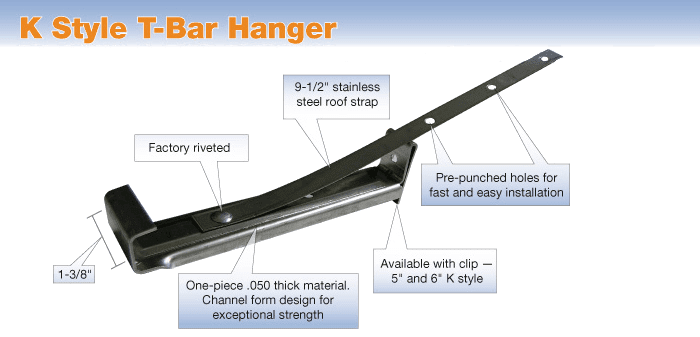
Also referred to as T-bars, these gutter hangers look similar to hidden hangers, but they instead have a vertical metal strap fastened to the middle (forming a suspension system). The remaining end of the strap is then fastened to the roof deck, eliminating the need for fasteners on the fascia board.
Spikes and Ferrules
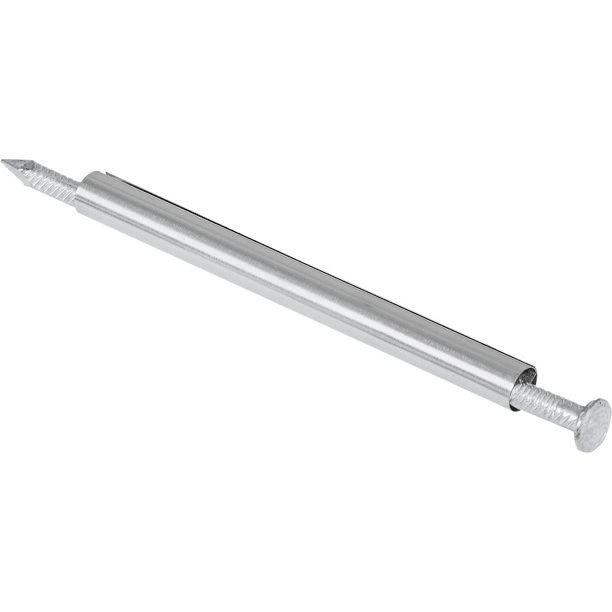
This usually includes a ferrule or metal tube that is driven across and ends at the rear of the gutter. Spikes and ferrules offer reliable security for your gutter system. However, because it fastens your gutter to the gutter board, the wood can split when the spike is driven through the fascia. If you're using spikes and ferrules, it's imperative to work with an experienced gutter installer to avoid any damage.
Brackets and Strap Gutter Hangers
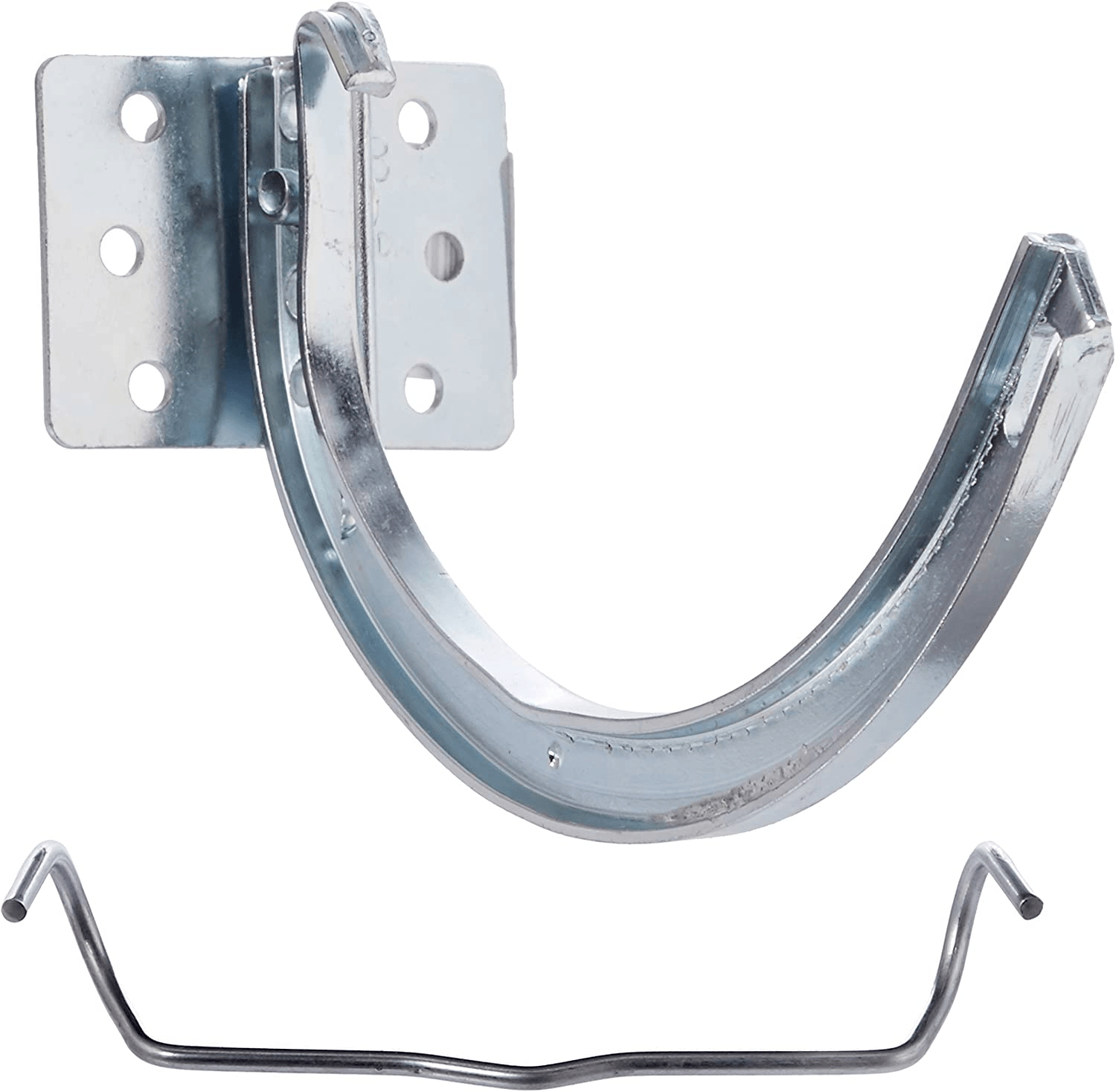
Brackets and strap-style gutter hangers are engineered with a half-round style. These types of hangers will wrap around the width of the gutter and fasten to the roof's fascia board. These hangers are notorious for adding strength to the structure. Because of this robustness, brackets and straps can withstand continual weather changes.
Wrap-Around Hangers
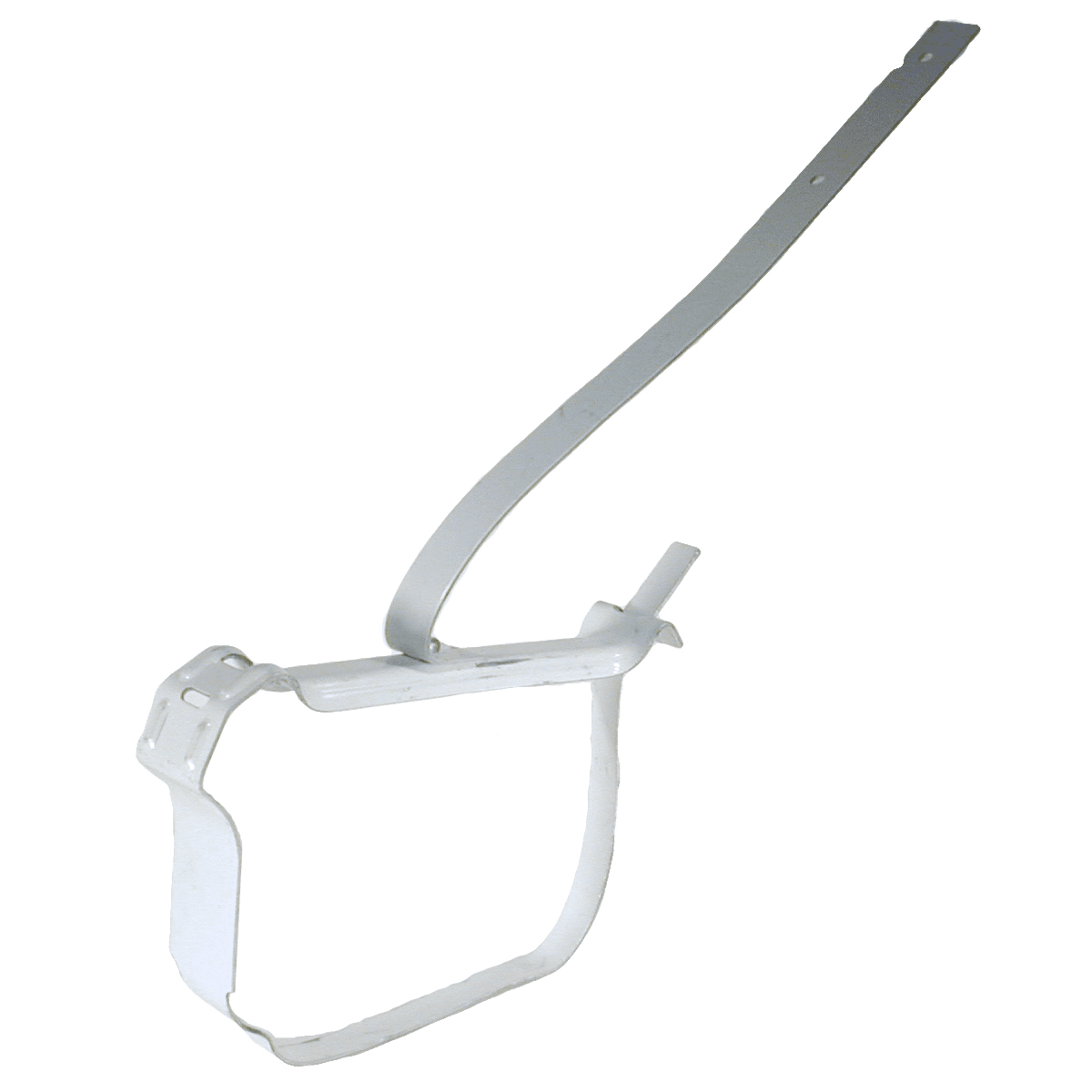
Wrap-around hangers are a hybrid between the exposed bracket and strap system and the T-bar hanger system. However, the wrap-around hanger system tends to be stronger than both.
Potential Problems Associated with Gutter Hangers
There are two things you should keep in mind when it comes to gutters and gutter hangers. These attributes include how well they are spaced out and what they are made of. Not all hangers are created alike….
Sagging Gutters
If the gutter hangers are spaced too far apart, it can compromise the entire system's ability to support itself; resulting in sagging gutters. The rule of thumb is gutter hangers should be spaced no more than 2 to 2.5 feet apart from each other. Unfortunately, all too often we see failures due to contractors trying to save money by using less hangers and installing them too far apart.
Gutter Material Options
The type of material your gutters are made from will determine their longevity and how often they need to be inspected. There are three options available to choose from:
When it comes to choosing the right gutter and gutter hanger material for your home, it’s important to consider the entire picture, including:
For homes surrounded by trees, installing gutter guards is one of the best ways of maintaining your gutter system keeping it free of debris and large critters.
Contact Ned Stevens Gutter Cleaning of Long Island
Whether you need new gutters, gutter repair, or gutter maintenance, the team at Ned Stevens Gutter Cleaning of Long Island can and will help. We offer decades of experience helping homeowners throughout the Long Island area protect their homes with gutter services and solutions.
Contact Ned Stevens Gutter Cleaning of Long Island today.

